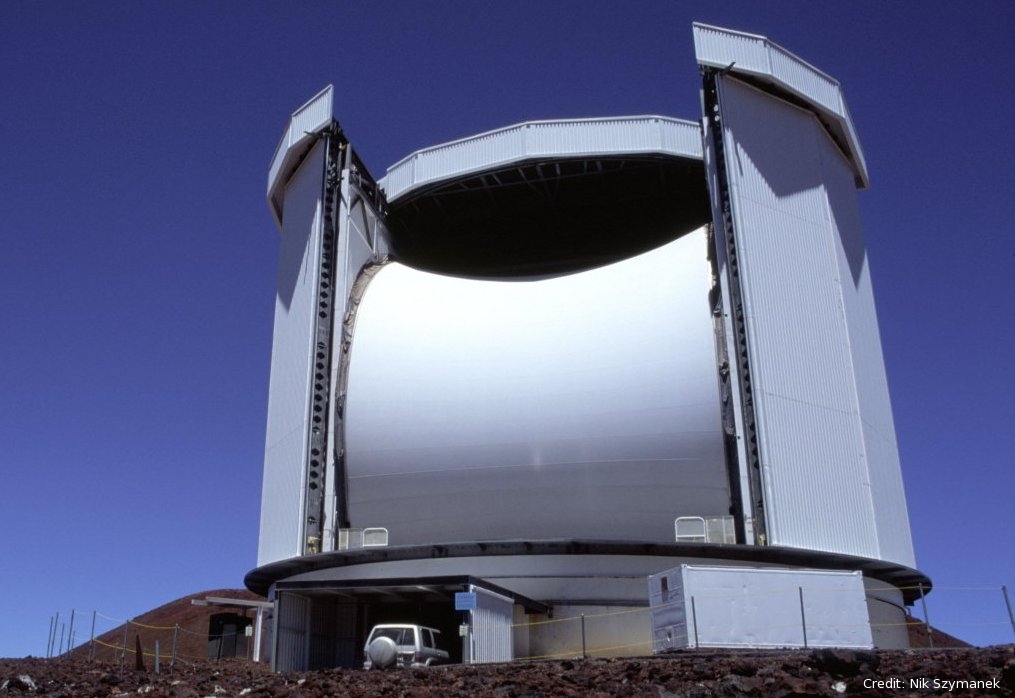Daily Image
18-03-2013A long-standing relationship with the JCMT comes to an end
| Submitter: | Arnold van Ardenne |
| Description: | On the 31st of March 2013, the Netherlands will formally end its involvement in the James Clerck Maxwell Telescope (JCMT) on Hawaii. We have been a partner in the UK/NL (and later Canadian) JCMT collaboration since 1981. As noted in a statement from NWO: "This marks an important milestone in what Dutch astronomers and policy makers see as an unusually productive and successful collaboration". The JCMT has been an important telescope for the Dutch astronomical community ever since it became operational nearly 25 years ago. It provided a focus for building up a broad base of scientific and technological expertise in the sub-millimetre (submm) region of the electromagnetic spectrum. Important discoveries have been made in many different areas e.g. interstellar medium studies, star formation in galaxies including our own, and cosmology. This milestone also reminds us of the crucial role that ASTRON has played in realizing the tremendous success that the JCMT has enjoyed over the last few decades. During the 1980's, a significant fraction of our staff was involved in the design, the building and the operations of the telescope. For example the first 350GHz receiver suite, including the IF system and Correlator, the thermal design of the telescope structure. Staff were seconded to the Rutherford-Appleton Laboratories near Didcot (UK) during the construction stage, and to Mauna Kea on Hawaii for JCMT operations. Other contributions include an acousto-optical backend by the then still existing Utrecht Astronomy group, SIS receivers at 350 and 460GHz, the world's first triple beam SIS receiver at 350GHz (still on display in the "Muller room" at ASTRON) and a 690GHz bolometer receiver also in collaboration with University Utrecht and SRON/Groningen. In 1991, it was decided by the then acting ASTRON director Harvey Butcher to focus on the Westerbork system upgrade at ASTRON, and to concentrate all (sub)mm activities at SRON Groningen in view of their early developments for HIFI/Herschel. This essentially marked the end of the (sub)mm receiver work at ASTRON, except for some calibration activities toward SCUBA-1 and some digital processing toward ALMA. |
| Copyright: | The James Clark Maxwell Telescope (www.jach.hawaii.edu/JCMT/) |
| Tweet |  |
